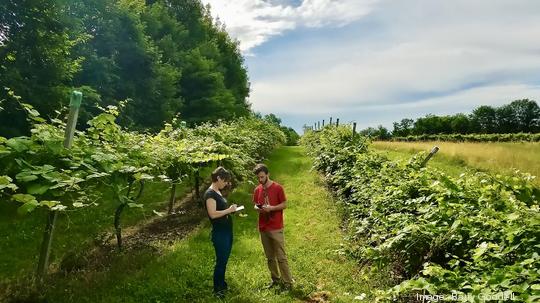
Grapevine trunk diseases don’t discriminate.
The pathogenic fungi that cause the diseases can be found in vineyards where Sauvignon Blanc, Cabernet Sauvignon and Grenache grape varieties grow. And once they strike, these diseases destroy the grapevines.
An international research team, led by the University of Massachusetts Amherst, have made a breakthrough that could save your wine. The team has identified the mechanism used by groups of pathogenic fungi to kill the grapevines.
The team included scientists from the University of Florence in Italy, the Université de Lorraine and the Université de Haute-Alsace, both in France, and the University of Concepción in Chile, as well as vineyard owners in France and Italy.
“The missing ingredient is an understanding of what very small compounds produced by the fungi are actually doing to the grapevines,” Barry Goodell, a professor of microbiology at UMass Amherst, said in a statement.
Trunk diseases are on the rise, according to the Global Wine Journal. In France, the diseases impact around 13% of vineyards. UMass researchers said that these diseases tend to impact older, well-established vines and have been known to devastate up to 30% of the vines in a single vineyard each year.
Researchers have known for a while that the disease-causing fungi usually enter grapevines through pruning wounds. Once inside, a group of fungi work together to kill the plant from the inside out, producing a rotting canker (dead section of wood) that gradually expands.
New research from this international team finally points to how these fungi decimate vineyards. They found that some of the fungi release compounds into the wood of the vine, including one compound that reduces iron.
“We also discovered that there’s another set of small compounds that are produced by other fungi in the consortia, and these compounds are really good at producing hydrogen peroxide. When hydrogen peroxide meets reduced iron — BOOM! — the reaction releases a host of oxygen radicals that damage the woody tissue causing an almost cancer-like disease,” Goodell said.
Once the woody tissue is broken down, the fungi feast on the sugar-rich fluid that was supporting the vine’s growth.
The research team has already pinpointed what it says is a relatively quick, cheap solution. They believe that antioxidants and low-toxicity chelators, which are often used to preserve freshness in food products, can stop the production of reduced iron and hydrogen peroxide.
Goodell said there are also some bacteria and fungi that produce antioxidants and chelating compounds. The team’s research shows that they could potentially combat grapevine trunk diseases through treatments that increase the presence of these organisms on the vines.
“Of course, there’s still work to be done,” Goodell said. “Vineyard pathologists need to test our research in the field, and other microbiologists will want to verify our work. But we already have colleagues as part of our larger team that are doing this, and we’re confident that this research represents a breakthrough in ways that we understand this devastating disease of vineyards and how to control that devastation.”








